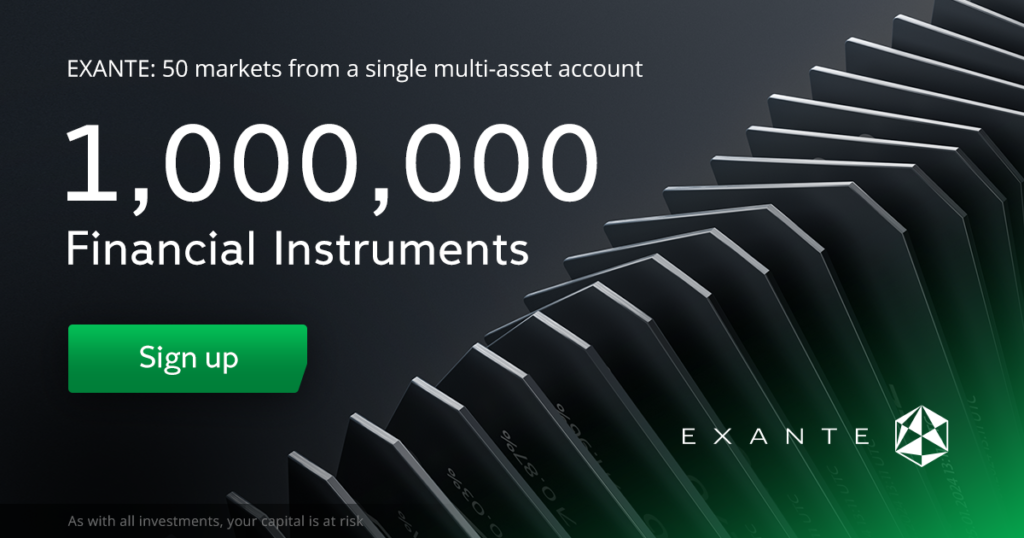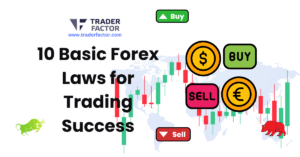Trading gold in the Forex market is an excellent way for beginners to explore commodities. Gold, traded as XAUUSD, offers both opportunities and risks. Understanding the best times, markets, and strategies is essential to succeed. This guide will cover everything you need to know about gold trading for beginners, including trading hours, profitable strategies, and the significance of different sessions.
| Session | Opening Time (UTC) | Closing Time (UTC) |
|---|---|---|
| Sydney | 9:00 PM | 6:00 AM |
| Tokyo | 12:00 AM | 9:00 AM |
| London | 7:00 AM | 4:00 PM |
| New York | 1:00 PM | 10:00 PM |
Table of Contents
ToggleHow to Trade Gold in Forex
To trade gold in Forex, you first need access to a reliable platform. Most gold pairs are traded as XAUUSD, meaning gold is priced in USD. Understanding gold’s movements requires evaluating its relationship with the US dollar, interest rates, and global economic conditions. For beginners, it’s vital to use demo accounts to practice before committing real money.
A solid XAUUSD trading strategy revolves around analyzing charts and evaluating market news. Gold trading charts provide a visual representation of price patterns, helping you make informed decisions. Additionally, using risk management techniques ensures you avoid significant losses. For instance, never risk more than 1-2% of your capital on a single trade.
Gold Trading Hours and Market Open Times
Gold trading in Forex operates 24 hours from Monday to Friday. However, it’s influenced by major global markets. XAUUSD market open time today aligns with the Forex market, meaning trading starts on Monday at 10 PM GMT and runs until Friday at 10 PM GMT. It’s essential to know the time zones where trading peaks.
The XAUUSD market open time on Monday often sees lower volumes before gaining momentum. During the week, the London session (8 AM to 4 PM GMT) and New York session (12 PM to 8 PM GMT) generate high activity. These sessions are particularly good for taking positions, as they see significant price movements.
What is the Best Time to Trade Gold in Forex?
The best time to trade XAUUSD depends on market activity. Typically, the overlap between the London and New York sessions, from 1 PM to 4 PM GMT, sees heightened volatility. For traders in the EST time zone, this overlap is between 9 AM and 12 PM, making it the best time to trade XAUUSD EST.
Reddit forums often emphasize the importance of trading when liquidity and volatility are high. Beginners should focus on these active windows as they offer better pricing and quicker execution. Ensure you’re aware of your platform’s XAUUSD time zone to trade effectively and avoid missing profitable opportunities.
The XAUUSD London and New York Sessions
The London and New York sessions are critical for gold trading. The XAUUSD London session time begins at 8 AM GMT and often experiences trends driven by European developments or financial news. This session is known for robust trading volumes, making it ideal for strategy-based trades.
The XAUUSD New York session time follows at 12 PM GMT. This session overlaps with the London market, leading to sharp price movements. During this time, geopolitical updates or US economic data can significantly impact gold trading prices. The overlap window is a great time to apply short-term strategies for maximum returns.
Profitable Gold Trading Strategy for Beginners
Beginners can achieve consistent results by starting with straightforward strategies. One profitable gold trading strategy is trend-following, where you trade in the direction of the prevailing trend. Use a gold trading chart to identify trends by analyzing moving averages and support/resistance levels.
Another approach is mean reversion, where you trade when prices deviate from their average. For example, if XAUUSD spikes upward too quickly, it’s likely to retrace. Both strategies require patience and practice. Additionally, always monitor gold trading prices, as they can change quickly based on external factors.
Tools and Apps to Enhance Your Gold Trading
To effectively trade, use a gold trading platform that offers real-time data, advanced charting tools, and low spreads. A good gold trading app should provide customizable alerts, ensuring you never miss important price movements. This is particularly useful for monitoring gold market open times in Forex.
Furthermore, tools like economic calendars and algorithms analyzing price data can improve decision-making. Beginners should familiarize themselves with these resources, as they provide insights into market conditions and help develop trading skills.
Minimum Amount Needed to Trade Gold in Forex
The minimum amount to trade gold in Forex depends on your broker. Many platforms allow you to trade XAUUSD with as little as $100 by offering leverage. However, this involves risk, as leverage can amplify both profits and losses. Start with cautious amounts and gradually increase your investment.
It’s also essential to choose a broker with flexible contract sizes. Start with micro-lots, which allow you to trade small values, minimizing exposure. This approach is especially good for gold trading for beginners, letting you learn while managing risks.
Best Time to Trade Gold for Beginners
Reddit users discussing best time to trade XAUUSD reddit often recommend the London and New York overlap. For most beginners, these active hours are easier to analyze, with higher chances of profitable trades. Monday’s trading sessions might feel slow, but they’re an excellent starting point for analysis.
Consider using a gold trading app to monitor the XAUUSD market open time today in your respective zone. This ensures you align your trading with peak activities and focus on consistent strategy application.
Gold Trading Insights for Beginners
Remember that gold trading, while lucrative, requires discipline and preparation. Always check XAUUSD market open time (GMT) and understand the influence of major markets. By combining this knowledge with a solid XAUUSD trading strategy, you can mitigate risks and enhance profitability.
What are the Forex Market Sessions?
The forex market operates 24 hours a day during weekdays, divided into four primary trading sessions based on global financial hubs. These sessions create a continuous cycle that allows traders worldwide to participate at any time. Each session has distinct features in terms of trading volume, activity levels, and strategy suitability. Understanding these differences is key to aligning your trading approach for maximum effectiveness.
The Sydney Session
The Sydney session marks the start of the forex trading week. It opens at 9:00 PM UTC and closes at 6:00 AM UTC. Being the smallest session in terms of trading volume, it often experiences slower market activity compared to others. However, it plays an essential role in setting the initial tone for the week.
Traders in this session frequently focus on currency pairs involving the Australian dollar, as local financial institutions drive the activity. Due to the relatively low volatility in this period, strategies like range trading can be effective. For beginners, the Sydney session offers a calmer environment to practice forex trading without the intense price swings seen in later sessions.
The Tokyo Session
Following the Sydney session is the Tokyo session, which runs from 12:00 AM UTC to 9:00 AM UTC. This session is also referred to as the Asian trading session. Tokyo is the third-largest forex market globally, and it generates substantial trading volumes, particularly in Asian currencies like the Japanese yen.
The Tokyo session often delivers steady market movement, with less erratic price behavior compared to later sessions. Traders focus on fundamental factors such as economic reports from Japan or China, which can significantly influence currency prices. This session is ideal for breakout strategies, as trends often start forming during this time. Despite its narrower focus on Asian currencies, the Tokyo session provides opportunities for disciplined traders who analyze patterns in its relatively stable market environment.
The London Session
The London session opens at 7:00 AM UTC and closes at 4:00 PM UTC. It is the largest forex trading session, responsible for more than a third of the total daily forex volume. This session sees high liquidity, thanks to the overlap between Asian markets winding down and European markets ramping up.
The extensive participation of institutional traders, hedge funds, and corporations leads to increased volatility and sharp price movements. Major European currencies like the euro and pound sterling are heavily traded during this period, making it a focal point for global forex traders. This session is particularly appealing for strategies such as trend-following or momentum trading. For beginners, the London session offers ample opportunities to trade with significant price actions and better spreads.
The New York Session
The New York session overlaps with the latter half of the London session, opening at 1:00 PM UTC and closing at 10:00 PM UTC. This overlap creates some of the most liquid hours in the forex market, with heightened volatility and trading activity. Many traders view this session as an optimal time to trade due to the heavy influence of economic data from the US.
Key reports such as Non-Farm Payrolls, inflation rates, and GDP numbers are released during this session, often leading to significant market reactions. The US dollar, the most traded currency, dominates activity here. Scalping and news-based trading strategies are particularly effective during these hours. Beginners can benefit from the high trading volume but should be cautious of the rapid price movements that can occur due to data releases.
By learning the characteristics of each forex session, you can better plan your trading schedule and choose strategies that align with the activity levels of each period. This understanding forms the foundation of an informed and successful trading approach.
Forex Market Time Zone Converter
Understanding forex market time zones is critical for succeeding in trading. The forex market operates 24 hours a day during weekdays, thanks to the overlapping of trading sessions across different regions. However, navigating these sessions effectively requires knowledge of time zones, especially when important market movements occur. A forex market time zone converter helps traders align their schedules with market activity, optimizing opportunities for profit.
This guide explores why time zones matter in forex trading, how to use a time zone converter, and effective tips for trading across multiple sessions. Whether you’re a beginner or an experienced trader, mastering time zones is crucial for a successful strategy.

Why Time Zones Matter in Forex Trading
The forex market is divided into four main trading sessions–Sydney, Tokyo, London, and New York–that reflect the business hours of the world’s largest financial hubs. Since these sessions operate in different time zones, their trading activity varies. This creates periods of high liquidity and volatility that traders can take advantage of.
For example, the overlap between the London and New York sessions generally witnesses the highest trading volume. During these hours, currency prices can move significantly due to market participation in both continents. Missing these active times could mean losing out on good trading opportunities, especially if your strategy depends on high market activity.
Furthermore, key economic events like interest rate announcements or job reports are often time-specific. Knowing when these events occur in your local time is essential to adjust your trading schedule. Without understanding time zones or using a forex market time zone converter, you risk trading during less favorable periods, where market movements could be limited.
How to Use a Forex Market Time Zone Converter
A forex market time zone converter is a tool that allows you to track the status of trading sessions across different regions in relation to your local time. These converters are particularly useful if you’re trading currencies from different time zones or trying to monitor session overlaps.
Using a time zone converter is simple. Start by selecting your current location or time zone, and the converter will adjust session times accordingly. It displays opening and closing hours for the Sydney, Tokyo, London, and New York markets in your local time. This ensures you’ll know precisely when a session starts, helping you position your trades effectively.

Many time zone converters are integrated into trading platforms or available online. Some converters also include countdowns indicating how much time is left in a session, which is helpful for traders who focus on short windows of activity. Incorporating these tools into your workflow ensures you won’t miss important trades or market overlaps due to confusion about time zones.
Tips for Trading Across Different Sessions
Trading forex requires not only understanding market sessions but also planning strategies based on session-specific dynamics. Here are some helpful tips for trading across different forex trading sessions effectively.
1. Focus on Session Overlaps
The most active periods in forex are during session overlaps, such as the London-New York overlap. High trading volume means better liquidity, tighter spreads, and more significant price fluctuations. Use a forex market time zone converter to mark these overlaps and align your trading schedule. For example, beginners can plan trades during the London/New York crossover as it offers plenty of volatility to capitalize on.
2. Adapt Your Strategy to the Session
Each session has unique characteristics. For instance, the Sydney and Tokyo sessions often experience lower volatility, making them ideal for range-bound strategies. On the other hand, trend-following strategies work well during the London session due to its high activity and directional price movements. Customize your trading tactics based on session behavior for better results.

3. Watch for News Events
Economic events like central bank announcements and macroeconomic data releases heavily influence forex prices. These events are often scheduled based on the time zone of the issuing country. Use a time zone converter to ensure you’re available during such events to react swiftly. For example, US Non-Farm Payrolls typically impact markets during the New York session, making it a high-priority time for traders.
4. Adjust for Daylight Savings
Pay attention to daylight savings changes, as they can affect session timings. For example, the New York session’s opening and closing hours might shift in relation to other sessions. A reliable time zone converter will update these changes automatically, ensuring you trade at the right time year-round.
Benefits of Using a Forex Market Time Zone Converter
Integrating a forex market time zone converter into your trading practice keeps you organized and prepared. It eliminates the guesswork of calculating when sessions start or overlap, which is especially useful for traders working across multiple time zones.

For beginners, time zone converters also help develop a routine. Knowing when to trade optimally ensures you’re mentally and technically prepared for market movements. Additionally, you’re less likely to overtrade during quieter times, preserving your resources for high-volume periods.
Best Time to Trade Forex
Timing plays a crucial role in forex trading. While the forex market is open 24 hours a day during weekdays, not all hours offer the same opportunities. The best time to trade forex largely depends on factors such as high liquidity, market volatility, and your chosen currency pairs. For beginners, aligning your trading schedule with the most active periods can significantly improve your chances of success.
This guide will explore the importance of high liquidity, explain how session overlaps influence trading opportunities, and provide tips for trading specific currency pairs during optimal hours.
Why High Liquidity Periods Matter in Forex Trading
The forex market functions through a network of global financial hubs, meaning trading activity is spread across multiple time zones. Liquidity refers to the ease with which a currency pair can be bought or sold without drastically affecting its price. High liquidity periods occur when trading activity is concentrated, leading to narrower spreads and better pricing.
For example, the overlap between the London and New York sessions often features the highest liquidity levels in the forex market. During these hours, institutional investors, corporations, and individual traders participate actively, driving significant currency price movements. High liquidity also supports efficient trade execution, reducing the risk of losing out due to slippage.

On the other hand, trading during low liquidity periods, such as the late hours of the Sydney session, may not yield the same results. Wider spreads and reduced market activity can make it harder to execute trades profitably. Beginners should focus on active trading hours when market participants are highly engaged.
The Best Times for Key Currency Pairs
Not all currency pairs are equally active throughout the day. The trading volume of a currency pair often peaks during the business hours of the countries or regions it represents. Understanding these patterns can help you identify the best times to trade specific pairs.
Major Pairs
Major currency pairs such as EUR/USD, GBP/USD, and USD/JPY see the most activity during their corresponding regional sessions. For instance, EUR/USD typically experiences significant price movements during the London session (7 AM to 4 PM UTC) and the New York session (1 PM to 10 PM UTC), as these are the operating hours of European and American markets.
Similarly, USD/JPY shows increased activity during the Tokyo session (12 AM to 9 AM UTC), when the Japanese markets are open. If you trade these pairs during their less active hours, you may struggle to find favorable pricing or sufficient liquidity for rapid trades. Beginners should monitor these patterns to time their trades effectively.
Minor and Exotic Pairs
While minor currency pairs (such as AUD/NZD or GBP/CAD) and exotic pairs (like USD/TRY or EUR/ZAR) tend to have lower volumes than major pairs, they perform well under specific conditions. For example, AUD pairs are particularly active during the Sydney session (9 PM to 6 AM UTC) due to Australia’s market hours.

However, exotic pairs often come with wider spreads and higher volatility, making them less suitable for novices. Familiarizing yourself with when these pairs are most liquid helps you manage risks while taking advantage of market activity.
How Session Overlaps Boost Trading Opportunities
Perhaps the most favorable times to trade forex occur during session overlaps. These overlaps occur when one major region’s trading session overlaps with another’s, creating a period of high liquidity and volatility.
London-New York Overlap
The London-New York overlap, from 12 PM to 4 PM UTC, is considered the busiest time in forex trading. It combines the trading volumes of Europe’s financial markets with Wall Street’s activity. This overlap is especially productive for pairs involving the US dollar, euro, and British pound.
Reportedly, price movements during this period are more pronounced, providing trading opportunities for both short-term and long-term strategies. Beginners looking for clear market trends and higher trade success rates should prioritize this overlap in their schedules.
Sydney-Tokyo Overlap
The Sydney-Tokyo overlap occurs between 12 AM and 2 AM UTC. Although less active compared to the London-New York overlap, it offers decent liquidity, particularly for trading pairs like AUD/JPY or NZD/JPY. This overlap tends to have steadier market movements, making it ideal for range-bound strategies.
Adapting your trading strategies to these overlaps can help you capitalize on volatility while managing risks effectively.
The Role of Time Zones in Forex Trading
Navigating the forex market requires a good understanding of time zones. The global nature of forex trading means that the timing of each session depends on its respective region. Missing out on key trading windows due to time zone differences could lead to missed opportunities, so keeping track of them is essential.
For instance, if you’re based in a time zone far removed from the major markets, like Australia, you’ll need to align your trading hours with the more active periods of the New York or London sessions. Time zone tools and converters can simplify this process, helping you optimize your trading schedule according to market activity.

Adjustments for daylight savings further complicate time zone calculations. For example, when the US shifts to daylight savings, the New York session might open an hour earlier in relation to the GMT time zone. Beginners should always confirm market timings, particularly when transitioning between standard time and daylight savings.
Tips for Beginners to Trade at the Best Times
Develop a Consistent Trading Routine
Consistency is key to successful forex trading. Based on your analysis of high liquidity periods and session overlaps, create a routine that aligns with your trading goals. Beginners should focus on one or two specific sessions to build familiarity with market dynamics.
Use Tools to Stay Organized
Leverage tools like economic calendars and forex market session trackers to stay informed about major events and session timings. These tools can help you plan your trades around critical price movements, ensuring you’re always prepared for market shifts.
Start with the Most Active Pairs
For beginners, major currency pairs like EUR/USD and GBP/USD offer the best introduction to forex trading. These pairs are active during the most liquid periods, making them easier to trade with lower spreads and clearer trends.
Forex Trading Volume
Forex trading volume is a key metric that provides critical insights into the activity levels of the forex market. By understanding this concept, traders can make better-informed decisions and fine-tune their strategies for improved performance. Volume signifies the total number of trades or transactions made within a specific period and reflects the degree of interest in a particular currency pair. For beginners and experienced traders alike, knowledge of trading volume can be a powerful tool to anticipate market movements and identify profitable opportunities.

This guide explores what forex trading volume is, why it matters, how to measure it, and the best ways to incorporate volume data into your trading approach.
What Is Forex Trading Volume?
Trading volume refers to the number of trades executed within a specific time frame. It serves as a gauge for market activity and liquidity. While the forex market operates 24 hours a day, volume can vary depending on the time of day, trading session, or currency pair.
For instance, during the overlap of the London and New York sessions, trading volume often peaks due to increased market participation from both regions. Conversely, during less active periods, like the end of the Asian session, trading activity and volume tend to drop. These fluctuations highlight the importance of understanding volume when timing your trades.
Volume also indicates the strength behind a currency’s price movement. A rising price with high volume suggests strong buyer interest, while a similar movement with low volume might signal a lack of conviction. This distinction helps traders identify whether a trend is sustainable or likely to reverse.
Why Does Forex Trading Volume Matter?
Forex trading volume plays a crucial role in market analysis. It helps traders interpret market sentiment and assess the reliability of trends. High volume often accompanies major price movements, demonstrating that a large number of participants are involved in trading.

For example, before and after the release of critical economic data, like US Non-Farm Payrolls or central bank rate decisions, trading volume typically spikes. The increased activity during these times reflects heightened market interest and creates opportunities for traders to capitalize on higher volatility.
Additionally, understanding volume can help you avoid false breakouts. A breakout accompanied by high volume is more likely to be genuine, whereas a low-volume breakout might fail to sustain momentum. This insight proves invaluable for planning your entries and exits, improving the overall effectiveness of your trades.
How to Measure Trading Volume in Forex
Unlike other financial markets such as stocks, forex trading operates over-the-counter (OTC) without a centralized exchange. This lack of a single data source means that exact trading volume cannot be calculated for the entire forex market. However, there are alternative ways to approximate volume using available tools.
Tick Volume
Tick volume is the most widely used proxy for measuring forex trading volume. It tracks the number of price changes or “ticks” that occur within a given period. The idea is that more price movements indicate higher trading activity, thus approximating the actual volume.

Most forex trading platforms display tick volume data alongside price charts. For example, using a candlestick chart, traders can observe the volume of ticks corresponding to each candle and analyze how it correlates with price fluctuations.
Volume Indicators
Several technical indicators are designed to help traders assess volume trends. These include the Volume Weighted Average Price (VWAP), On-Balance Volume (OBV), and Accumulation/Distribution indicators, all of which offer insights into the interaction between volume and price movements.
For instance, OBV adds volume when a currency’s price closes higher and subtracts it when the price closes lower, helping traders confirm the strength of ongoing trends. By applying these indicators to your analysis, you can enrich your understanding of market dynamics.
Tips for Using Volume Data Effectively
Analyzing trading volume in forex can be overwhelming for beginners, but with the right techniques, it becomes a valuable part of your strategy. Below are some tips for using volume data effectively.

Confirm Trend Strength
When a currency pair trends higher or lower, always check the accompanying volume. A strong trend is typically supported by increasing volume, whereas a weakening trend often coincides with declining volume. For example, if the EUR/USD rises with high tick volume, it signals solid buyer interest, increasing the likelihood that the uptrend will continue.
On the other hand, if price changes are minimal despite high volume, it could indicate market indecision or consolidation. Understanding these patterns will enable you to position yourself more effectively.
Spot Reversals and Breakouts
Volume analysis is a powerful tool for identifying reversals and breakouts. For instance, if a range-bound currency pair suddenly breaks out of its price range and is accompanied by a surge in volume, the breakout is likely genuine. Conversely, a breakout with low volume might indicate a false signal.
Similarly, reversals can often be predicted when volume suddenly spikes after an extended trend. For example, during a prolonged downtrend in USD/JPY, an unexpected surge in tick volume may signify buyer interest, hinting that prices are about to rise.

Use Volume Indicators for Support
Rely on volume-based indicators to complement your analysis. For example, the Accumulation/Distribution indicator helps identify whether large traders are accumulating or distributing a currency pair, even when price movements are subtle. Combining such tools with price action gives you a more comprehensive picture of market dynamics.
Match Volume to Market Sessions
Focus on analyzing volume during active trading sessions when liquidity is highest. For example, monitor tick volume during the London-New York overlap, as it often provides the clearest trends and price movements. Avoid placing significant trades during periods of low volume, such as the final hours of the Sydney session, where market activity is limited.
Final Thoughts
Gold trading in Forex offers opportunities but demands informed decisions. Focus on active sessions, practice strategies, and understand market dynamics. By mastering basic concepts, you can build confidence while trading XAUUSD competently. Likewise, The best time to trade forex depends on high liquidity periods, session overlaps, and the currency pairs you’re targeting. By focusing on active trading hours and adapting your strategy to different sessions, you can maximize your chances of success. For beginners, understanding forex market sessions and timing your trades strategically will build confidence and lead to better results in the long run.
Disclaimer:
All information has been prepared by TraderFactor or partners. The information does not contain a record of TraderFactor or partner’s prices or an offer of or solicitation for a transaction in any financial instrument. No representation or warranty is given as to the accuracy or completeness of this information. Any material provided does not have regard to the specific investment objective and financial situation of any person who may read it. Past performance is not a reliable indicator of future performance.tr















